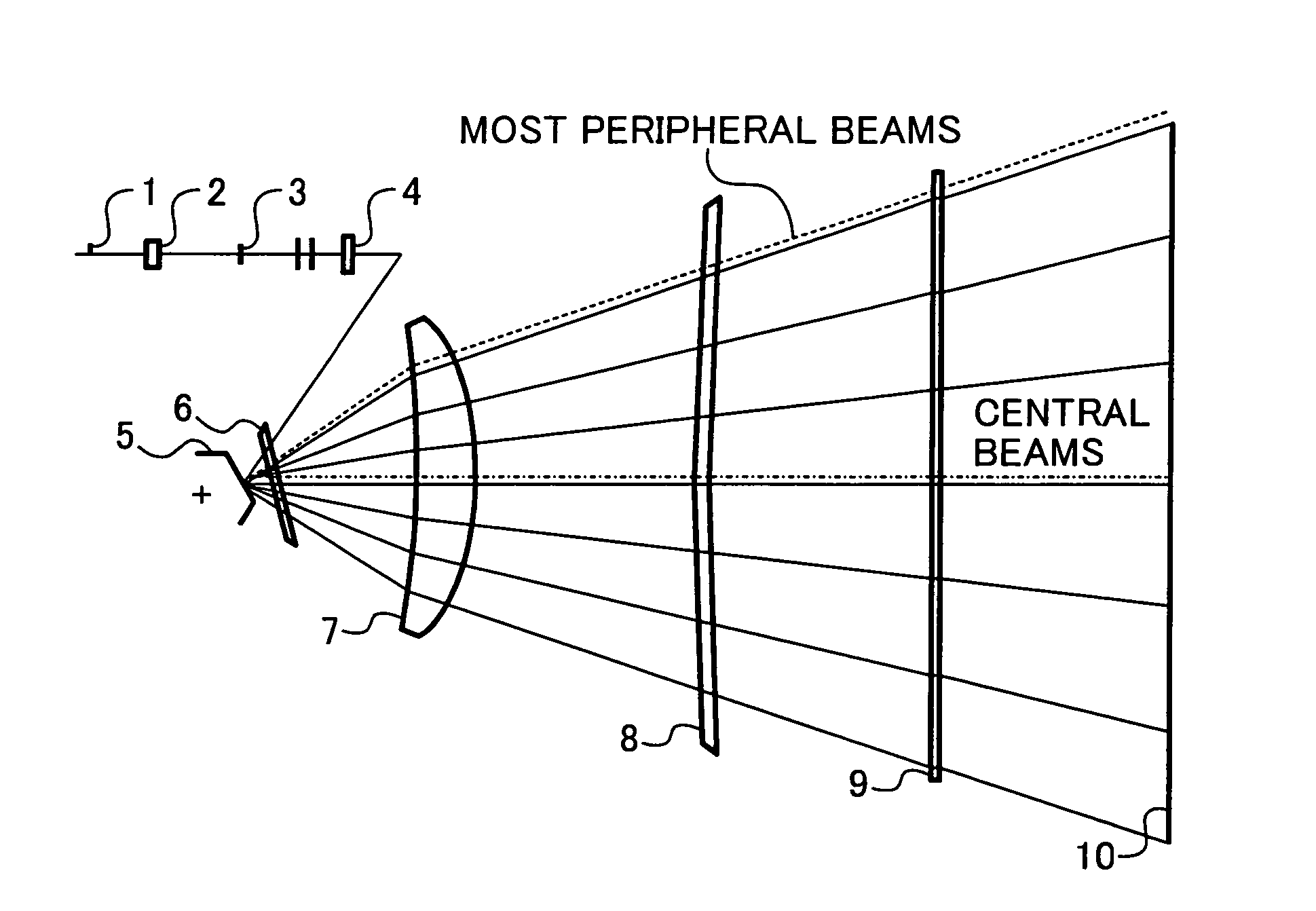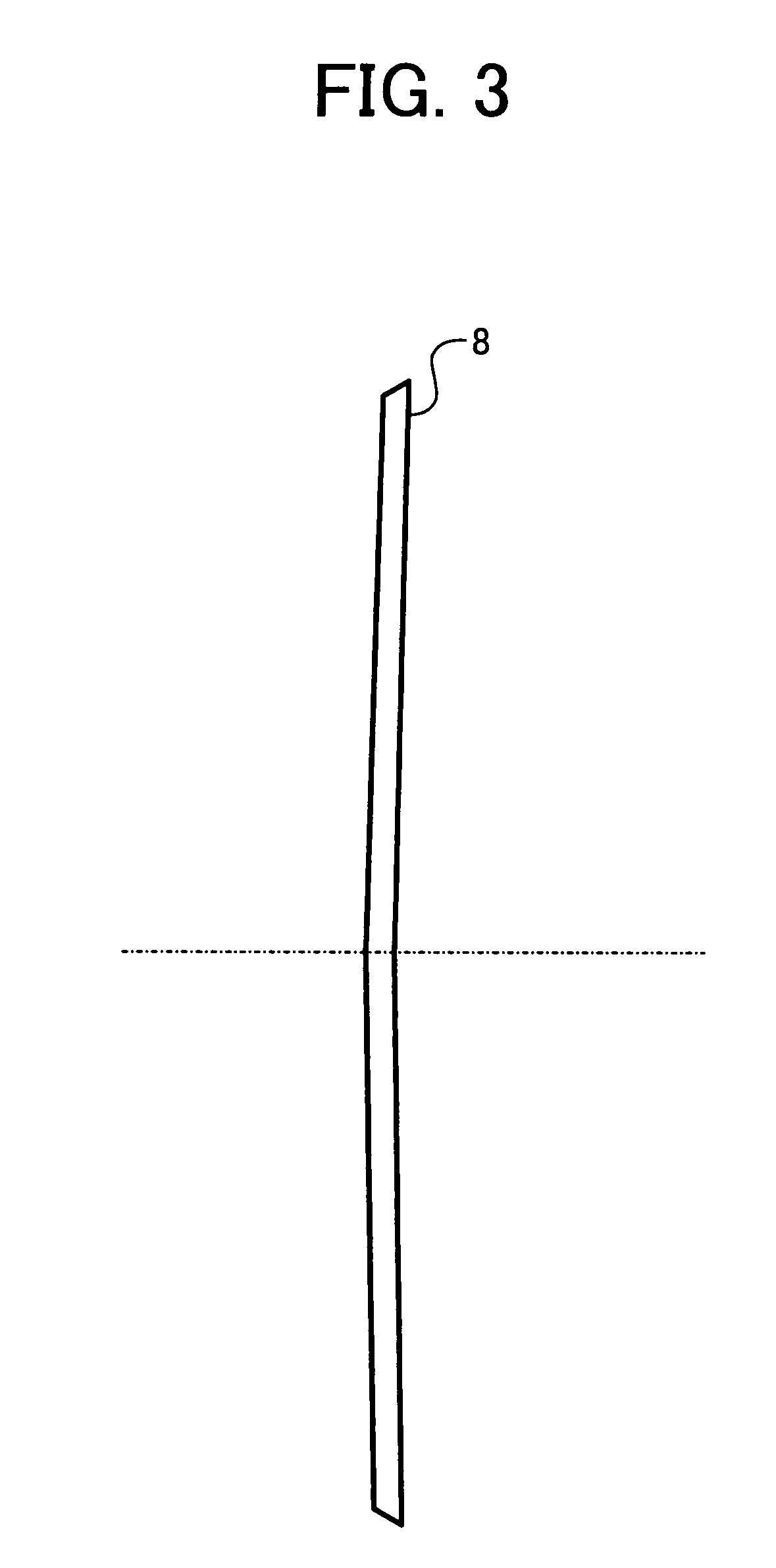Optical scanner and image forming apparatus
an image forming apparatus and optical scanner technology, applied in the field of optical scanners and image forming apparatuses, can solve the problems of forming time and parts cost increase, shading and ghost light have not been taken into account, and the image thickness of the thickened beam spot diameter is not good, so as to achieve the effect of reducing the cost of parts and forming tim
- Summary
- Abstract
- Description
- Claims
- Application Information
AI Technical Summary
Benefits of technology
Problems solved by technology
Method used
Image
Examples
first embodiment
[0041]FIG. 1 illustrates an optical scanner according to a A light source 1 in the optical scanner includes a semiconductor laser, and for example, may be a multi-beam light source in which a plurality of light emitting sources are arranged at an equal interval. The beams emitted from the light source 1 are divergent beams, and are coupled into an optical system thereafter by a coupling lens 2 that constitutes an optical coupler of the present invention. The beams coupled by the coupling lens 2 may be weak divergent beams or weak convergent beams, or parallel beams. The beams are subjected to beam forming by an aperture 3, and the beams converge only in the vertical scanning direction by the action of a cylindrical lens 4. Therefore, a line image of the beams, longer in the horizontal scanning direction than in the vertical scanning direction, is formed at a position close to a deflection reflecting surface of a polygon mirror 5, being a deflector. The cylindrical lens 4 and the po...
second embodiment
[0056]Japanese Patent Application Laid-Open No. 2001-21824 discloses a method of decreasing the angle between the incident beams and the scanning lens. However, in this method, it is necessary to largely curve the scanning lens within the deflection surface of revolution. Consequently, the workability of the scanning lens decreases, and the tolerance for decentering considerably decreases. Therefore, in the second embodiment, the power in the vertical scanning direction on the first surface of the second scanning lens 8 is made positive, so that the wavefront aberration occurring on the first surface of the first scanning lens 7 is compensated by the first surface of the second scanning lens 8.
[0057]If the first scanning lens 7 has a meniscus shape with the concave directed toward the polygon mirror in the horizontal scanning direction, as shown by two-dot chain line in FIG. 10, then there is the possibility that the ghost light reflected from the first surface of the second scannin...
third embodiment
[0058]The optical scanner will be explained next. In this embodiment, the appearance is the same as those shown in FIGS. 1, 9A and 9B. The scanning optical system includes a plurality of scanning lenses 7 and 8. The first scanning lens 7 closest to the deflector has a meniscus shape, which is concave toward the deflector side in the horizontal scanning direction. The first surface of the scanning lens 7 that is closest to the deflector has a negative power in the vertical scanning direction, and is the special toric surface in which the radius of curvature in the vertical scanning decreases from the optical axis of the lens surface toward the periphery of the horizontal scanning direction, and increases bordering on an extreme value. The first surface of the second scanning lens 8 farthest from the deflector has a convex shape toward the deflector side in the horizontal scanning direction, and the second scanning lens 8 farthest from the deflector has a negative power in the horizo...
PUM
 Login to View More
Login to View More Abstract
Description
Claims
Application Information
 Login to View More
Login to View More - R&D
- Intellectual Property
- Life Sciences
- Materials
- Tech Scout
- Unparalleled Data Quality
- Higher Quality Content
- 60% Fewer Hallucinations
Browse by: Latest US Patents, China's latest patents, Technical Efficacy Thesaurus, Application Domain, Technology Topic, Popular Technical Reports.
© 2025 PatSnap. All rights reserved.Legal|Privacy policy|Modern Slavery Act Transparency Statement|Sitemap|About US| Contact US: help@patsnap.com



